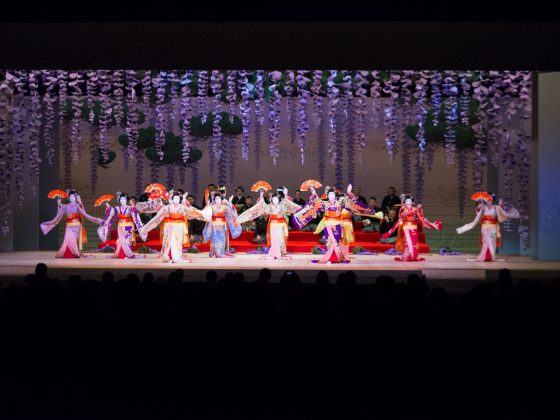The Nippon Domannaka Festival (which literally means “in the middle of Japan”) (commonly known as Domatsuri) is held at the end of summer, in Nagoya. During 4 days, the city is filled with numerous groups of yosakoi dancers of all ages, who come from all over the country and, even from abroad. The Yosakoi dance and the small events that surround the main events, with the original music and colorful costumes, attracts thousands of spectators every year.

A brief history
The Domatsuri Festival starts around 1999, with the dream of some university students to revitalize Japan through a dance festival that will communicate their emotions. Reaching not only to the whole country but also to the rest of the world.
The first festival had only 26 dance teams and 1,500 dancers. Today, the festival has 210 dance teams, 23,000 dancers and more than 2 million spectators. This makes it one of the biggest events in Japan.
What is Yosakoi dance
The Yosakoi dance (よ さ こ い) is a unique style of dance originated in Japan, performed at festivals and events around the country. This style of dance is very energetic, combining traditional movements of Japanese traditional dance with modern music. Choreographed dances are often performed by big teams, that can reach more than 100 people. Yosakoi participants include men, women and children of all ages, sometimes all within the same team.
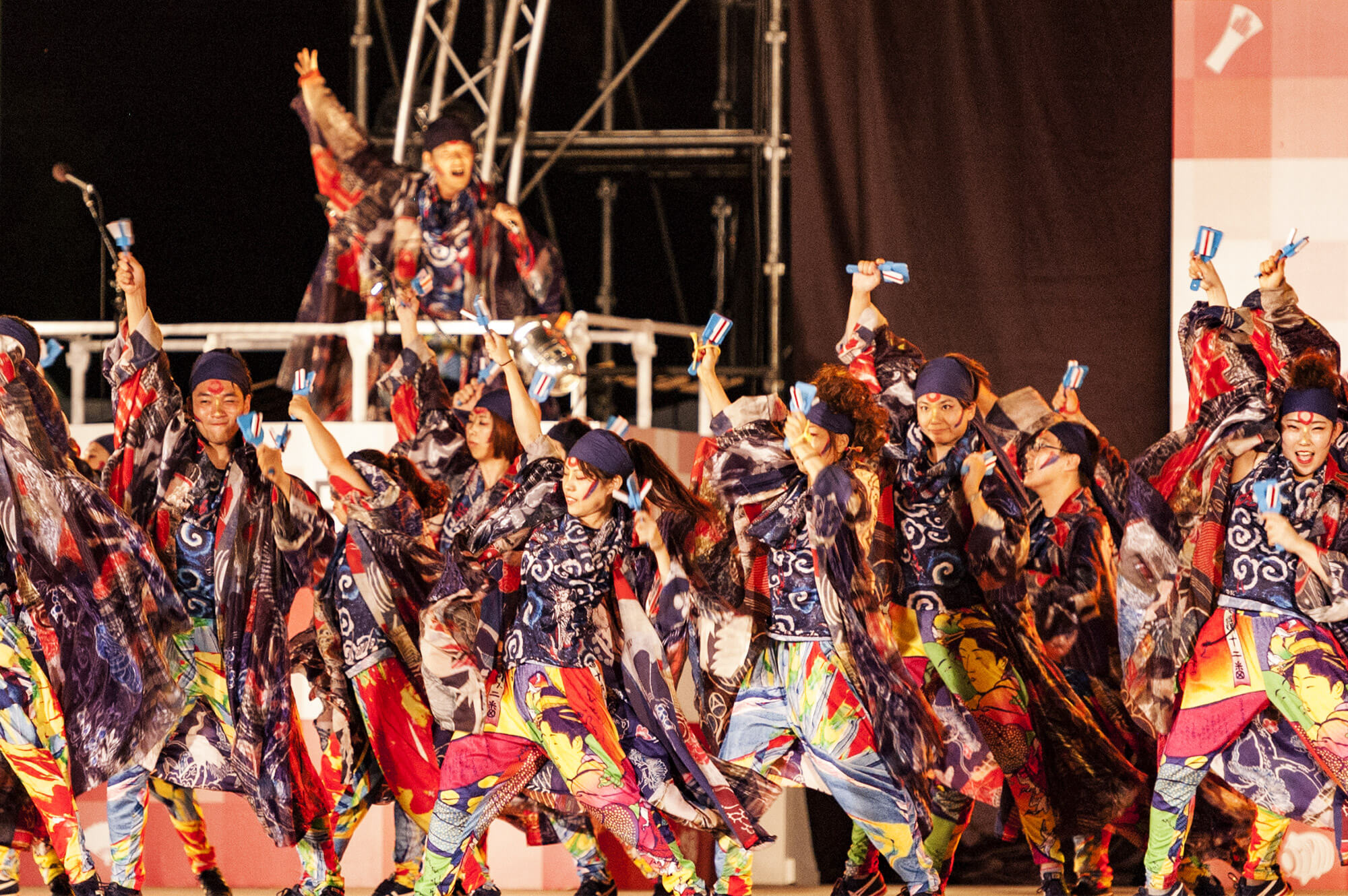
An important element in the Yosakoi dance is the naruko (鳴 子). The naruko is made of wood, with small pieces that when hit one another emit a sound like that of an applause.
The naruko originally hung in the rice fields to scare away the birds with it’s sound. Since it was added to the Yosakoi Festival in Kochi (birthplace of the Yosakoi dance), the naruko has become a symbolic element used in events related to Yosakoi dance around the country.
How the Domatsuri is celebrated
On the first day, the Domatsuri opening ceremony is held on the main stage with a “Campus Battle” Yosakoi Dance Competition among various university teams from all over the country. In this competition the public is the one that determines the winner team through the “applause level”. The team that is most applauded becomes the winner of this competition.
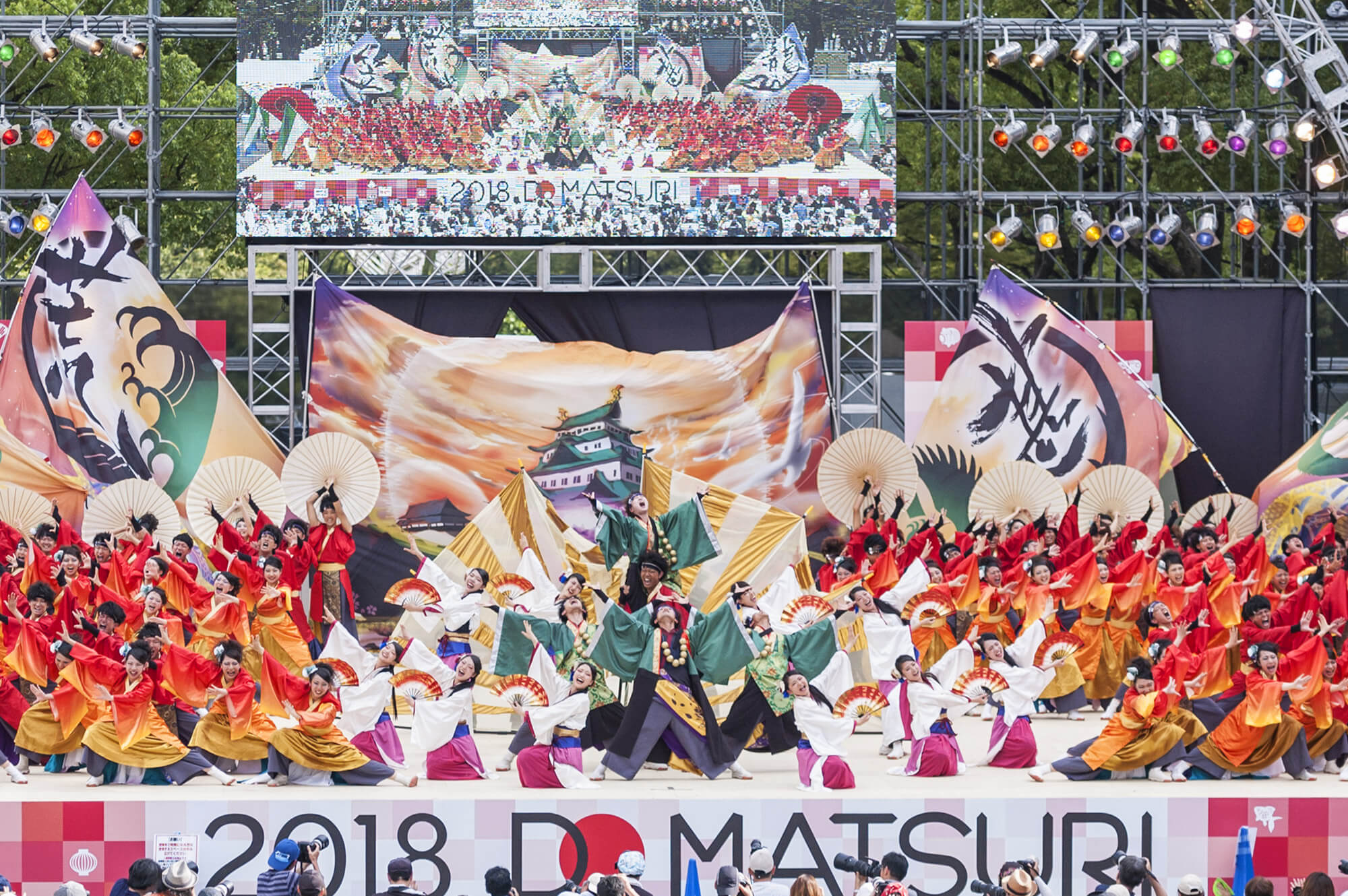

The second day, also held on the main stage, celebrates the Festival Eve Night, that is, the eve of the Grand Festival Domatsuri. On this day, yosakoi dance teams winners from previous editions perform at the stage.
This year, in addition, we enjoyed the participation of foreign yosakoi dance groups arrived from Saipan (Northern Mariana Islands), South Korea and Taiwan.
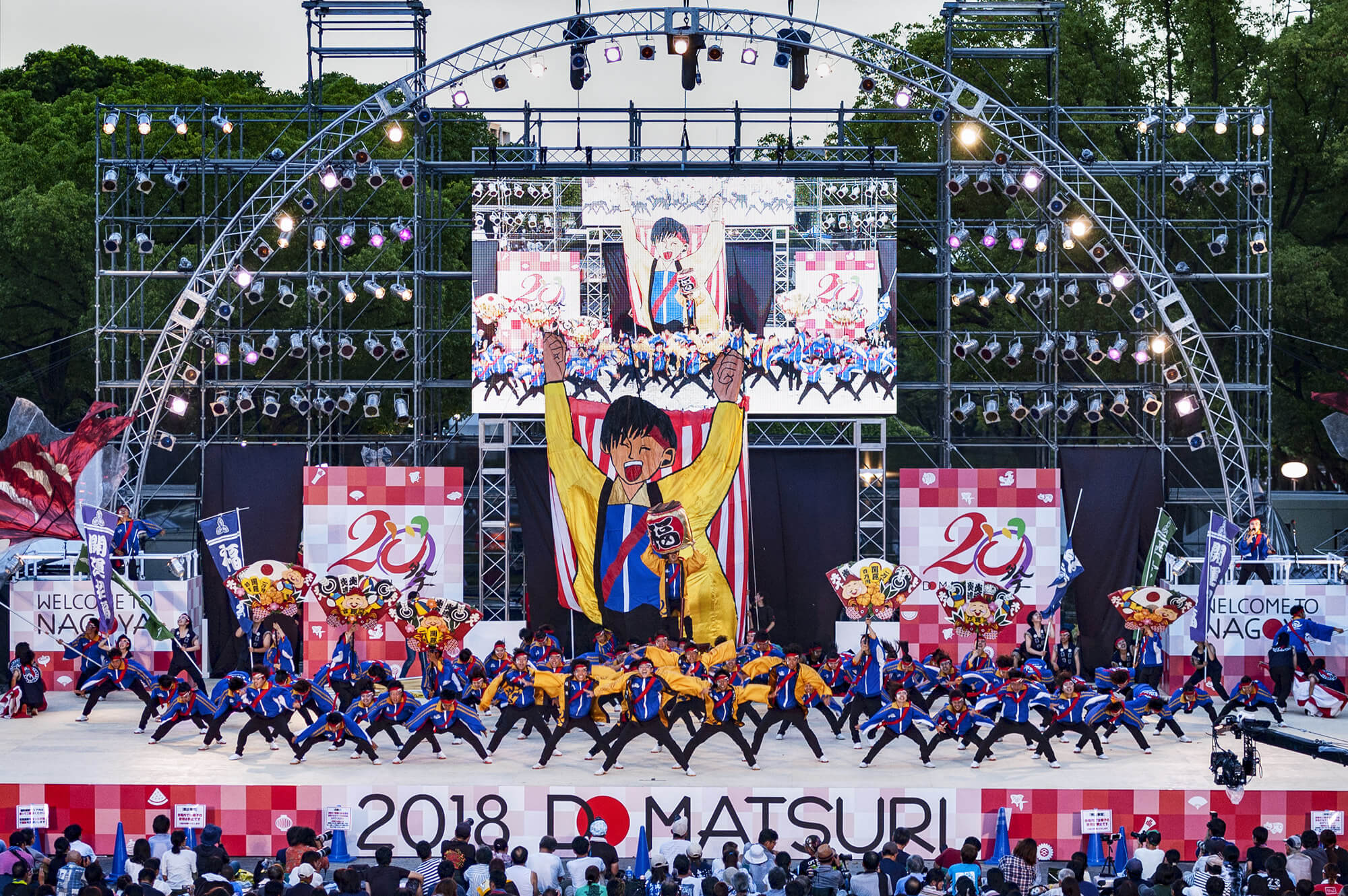
The third and fourth day are the most important days of the Domatsuri. These two days, from very early in the morning (around 9:00 a.m), the yosakoi dance participants groups performances start. These performances are take place in around 23 stages spread throughout Nagoya (Nagoya Castle, Nagoya Station, Osu, Sakae, Nadya Park, Hisaya Park, etc …) and also in other nearby cities ( Kachigawa, Shin Anjo, etc …).
Around noon, there are parades on both sides of the main street of Sakae. Each group of yosakoi is headed by their truck where are the singers, musicians and animators of the group. Next, the dancers, each team one by one dance on front of the judges of the competition to be punctuated. This score will determine a good part of the total score in the semifinal that takes place on the fourth day.



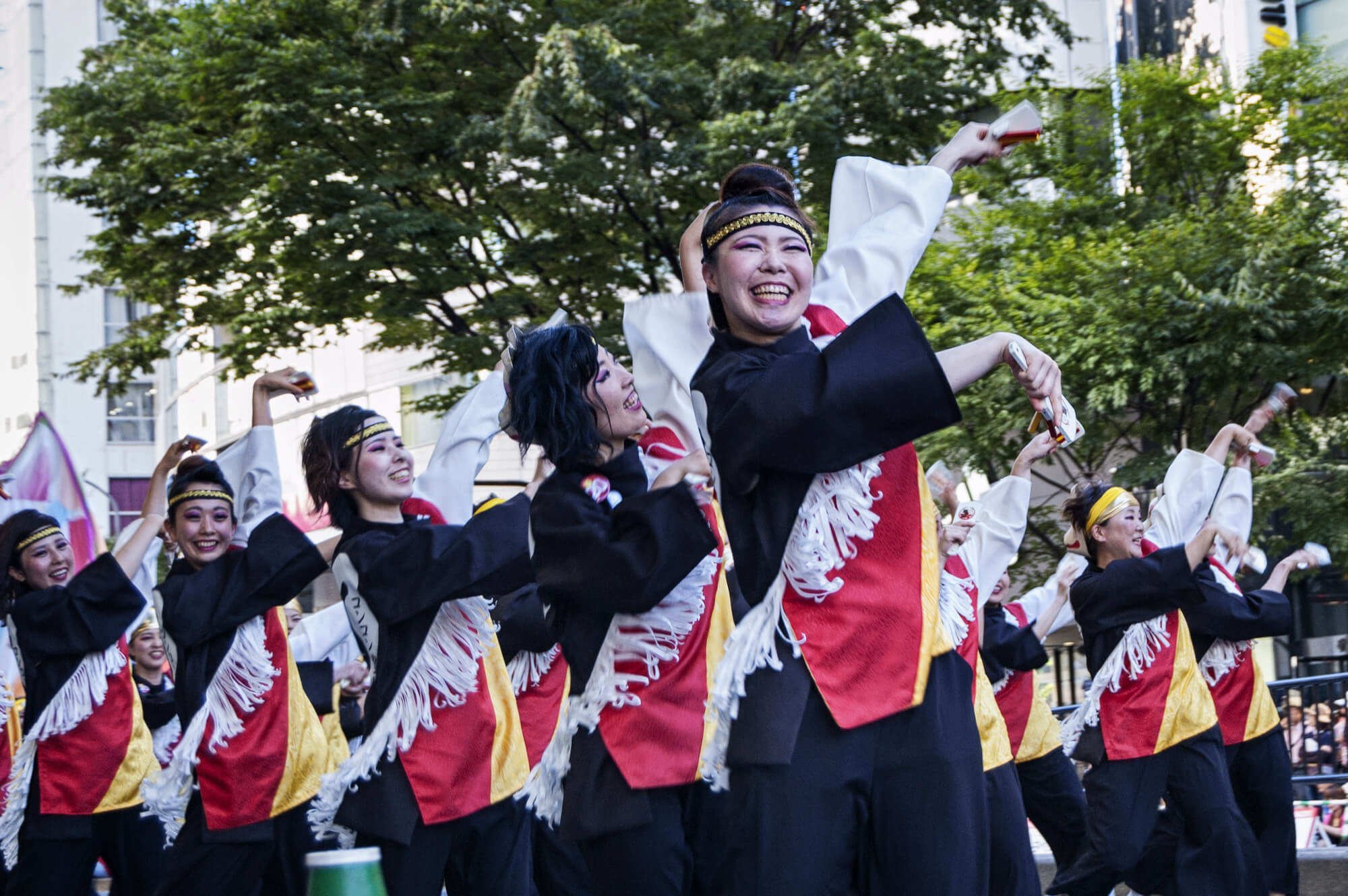


One of the participating teams most expected every year is “En” (縁) from the Hokkaido University. The energy that spreads this group is amazing.
Maximum emotion on the Final
The excitement of the festival reaches its peak with the Final, and biggest attraction of the event, taking place on the night of the fourth day of the festival. This is when the “Domatsuri Award” is given to one of the more than 200 participating teams. These teams spend a whole year composing and practicing their performance to have the opportunity to win this award. The high level of competitiveness, its excellent costumes, music and choreography, captivates the large audience.


This is the performance of the winning team, “Kagura (か ぐ ら)”.
Tips
1. Be sure to pick up a Domatsuri brochure that is distributed at the different information points in Sakae. In the brochure you will find detailed information about the events of each day and a map with the areas where the performances and parades take place, with their respective schedules.
2. You can see for free the semifinal and the final but in the Final night the free zone fills up really fast. I recommend you arrive early, or buy a ticket to see the final more comfortably from the numbered seats.
Getting Here
Domatsuri has different locations for each event. For more information, check the official website.
General Information
Festival time schedule
from 9:00 a.m to 9:00 p.m
For the parades schedule and each stage schedule go to the official website.
Prices and tickets
Check the official website to check the numbered seats tickets information for the semifinal and the final.


